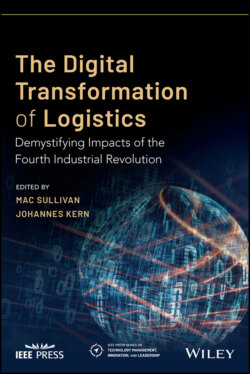Читать книгу The Digital Transformation of Logistics - Группа авторов - Страница 89
Motivating Example: Konica Minolta Using RPA
ОглавлениеThe Japanese tech giant Konica Minolta Inc. adopted RPA in 2018 through the RPA provider Automation Anywhere and has since seen massive returns through working hours saved. In 2018, the company saved 19 000 full‐time employee (FTE) hours through 55 automation deployments with higher aims in the coming years. Achieving these kinds of returns can be tough though. An IT director at Konica Minolta explained that “of course, like every other company, we have faced many obstacles while going through the journey of RPA before becoming successful. For example, in Konica Minolta's Asia Pacific team, we [had to] create an RPA governance structure, training framework for the region, internal RPA application process, disaster recovery plan. [Afterwards, in the local team], such as Konica Minolta Hong Kong, [had] to go through a series of learning workshops.” This sheds some light on the complexity that comes with rolling out RPA in a large multinational company without even scratching the surface of the planning and preparation that must be done.
To successfully roll out RPA, Konica Minolta had to increase its RPA training program to include nearly five times the number of employees that were in training when they decided to adopt throughout 2018. Some of those trained would become RPA champions in different branches who oversaw further training, identifying processes with potential for automation and creating an RPA culture within their offices. This was a massive shift for parts of their workforce going from knowing little about RPA to being leaders of its development within their company. In addition to the careful planning and testing that comes before RPA is rolled out, upskilling and gaining buy‐in from workers represents another huge challenge. However, navigating these complexities can be seen to have large returns when done correctly. After their successful initial RPA rollout, Konica Minolta aimed to nearly double the number of hours saved in the following year, and they show no intention of slowing down. The IT director shared, “The RPA journey in Konica Minolta has provided an invaluable insight into how automation can change a company's culture and the ways its employees work. However, we will not stop here, and we have already planned RPA 2.0, which is allowing staff to interact with the RPA bot in real‐time. This is for sure an exciting time for all of us.” With returns like Konica Minolta has seen, it certainly shows that RPA can be rolled out if the investment in training is there.
RPA is best understood when compared to a Microsoft Excel macro. In an Excel macro, you can automate cell activities by using VBA coding and Excel functions. RPA adds an advantage in that it can automate tasks across many different applications with simple programming language and function calls. As shown in the Konica Minolta case, one of the first tasks needed is to identify the RPA provider. The company ran through a series of RPA software provider comparisons and finally selected the application from Automation Anywhere, a leading provider in this space.
